These once-essential items filled our grandmothers’ kitchens—now they’re charming relics of a bygone, yet deliciously different, time.
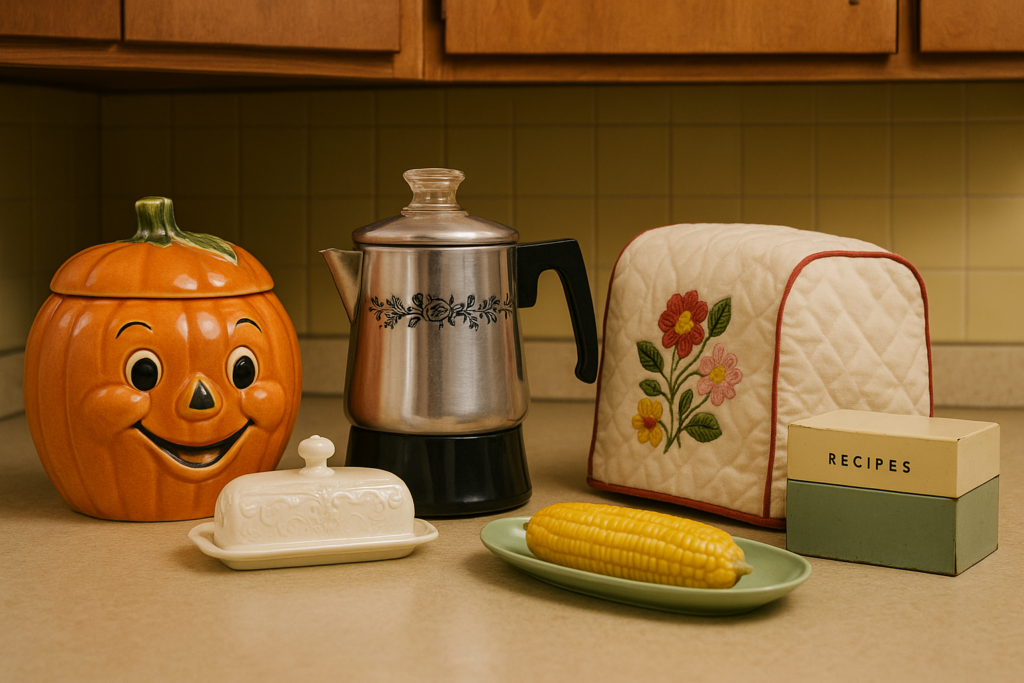
These once-essential items filled our grandmothers’ kitchens with warmth, practicality, and a touch of whimsy. Today, they sit on dusty thrift store shelves or in antique shop windows, waiting to be rediscovered. Some were purely functional, others delightfully decorative, but all of them tell a story about how home cooking used to look and feel. Before sleek minimalism and smart gadgets took over, these classics brought color, character, and comfort to every meal. Whether you remember using them yourself or just love the nostalgia, these vintage kitchen treasures offer a charming glimpse into a deliciously different time.
1. Ceramic Cookie Jars
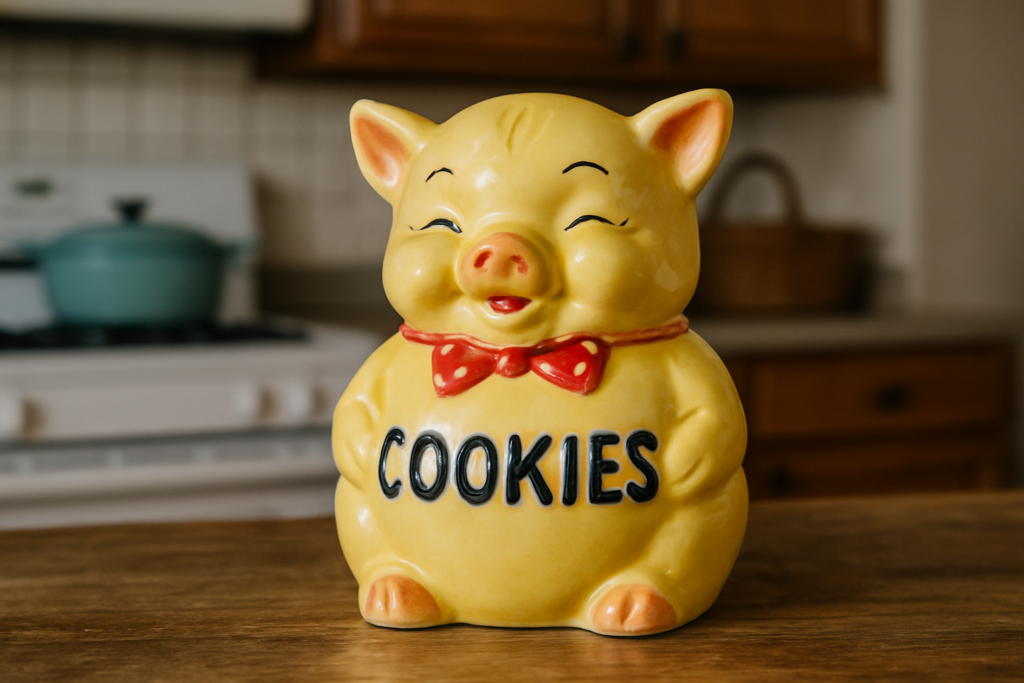
Whether shaped like a pig, a clown, or a cartoonish cat, ceramic cookie jars used to be prized kitchen companions. They sat proudly on countertops, not hidden away in cupboards, and offered an irresistible invitation for a sneaky snack. These jars were often gifted at weddings or holidays and reflected the homeowner’s personality or seasonal spirit. The satisfying clink of the lid was a familiar sound in many childhoods, signaling a moment of joy and maybe a bit of mischief.
Today, you’re more likely to find these whimsical containers at estate sales or tucked on the top shelf of a thrift store. While most modern kitchens rely on Tupperware or zip-top bags, these vintage jars remain a sweet symbol of family traditions and homemade treats. Collectors now hunt them for nostalgia or decor, with rare designs fetching impressive prices. Still, their true charm lies in the memories they hold of warm cookies, generous grandmothers, and the kitchen as the heart of the home.
2. Jell-O Molds
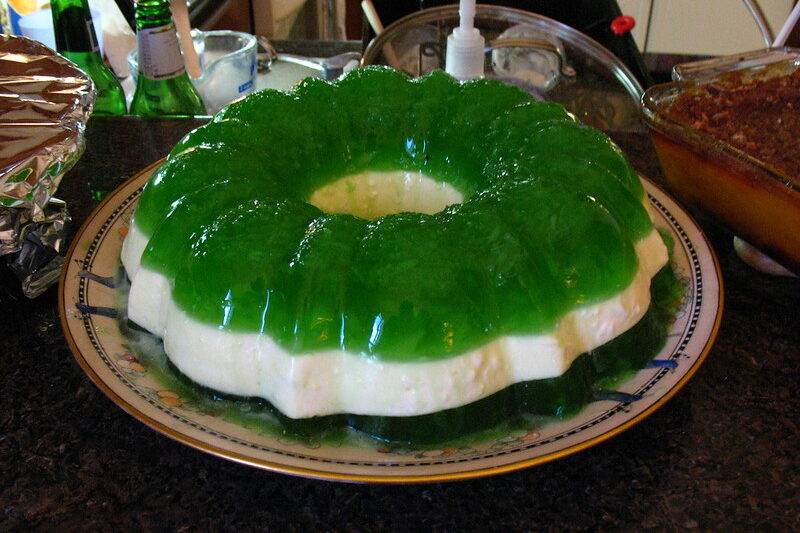
Jell-O molds weren’t just desserts; they were spectacles. Suspended fruits, vegetables, marshmallows, or even seafood turned into gelatinous centerpieces, especially during holidays or potlucks. These copper or plastic molds hung proudly on kitchen walls or waited in cabinets, ready to turn a simple powder mix into something sculptural and oddly festive. Whether you loved or loathed the taste, the visual appeal was undeniable.
Today, it’s rare to see a Jell-O mold in action, unless it’s for a themed party or retro recipe revival. The molds themselves, however, remain popular collector’s items, especially those in classic mid-century shapes. Their kitschy charm has found a new home in vintage decor, even if the recipes they inspired remain safely buried in community cookbooks. Still, one look at a copper star or bundt-style mold can instantly transport you back to a time of potluck tables and ambitious culinary creations.
3. Butter Dishes with Lid
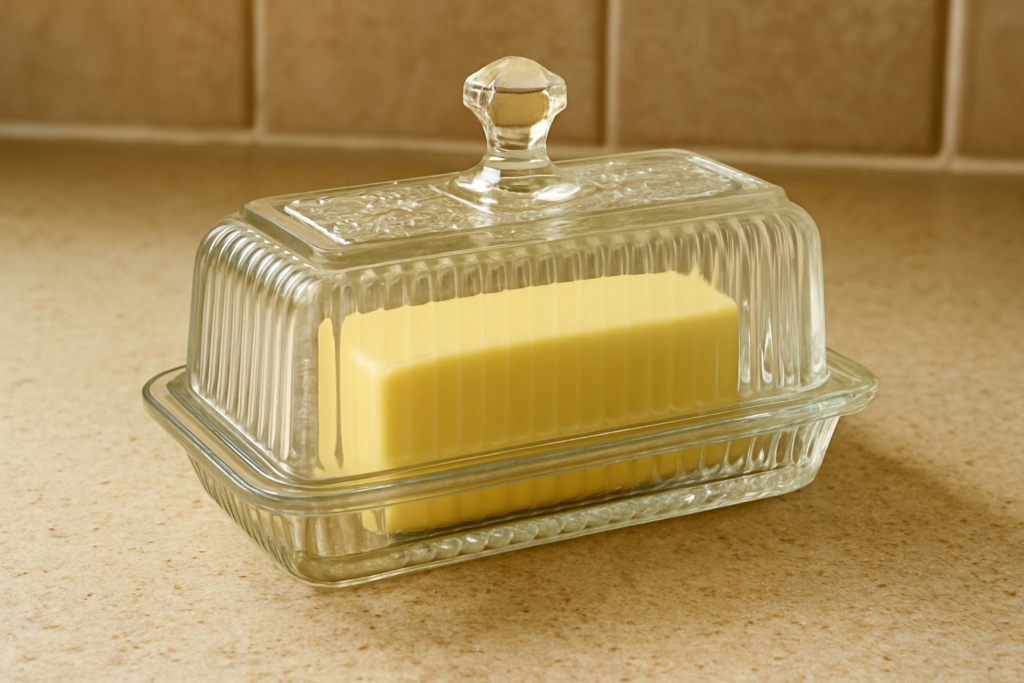
The butter dish once lived permanently on the counter or dinner table, rather than being tucked away in the refrigerator. Made of ceramic, glass, or even porcelain with intricate floral or fruit patterns, it kept butter soft and spreadable for morning toast or dinner rolls. Some were shaped like farm animals or had decorative handles, making them both functional and ornamental.
As modern packaging took over, the butter dish fell out of fashion, but it remains a favorite for those embracing vintage kitchen aesthetics. The idea of leaving butter out may raise eyebrows today, but in homes with daily baking or big family meals, it made perfect sense. Now, you can find these quaint dishes in secondhand shops, often missing their lids but still oozing old-school charm. They’re a quiet reminder that some things were meant to be savored slowly and spread generously.
4. Manual Coffee Percolators
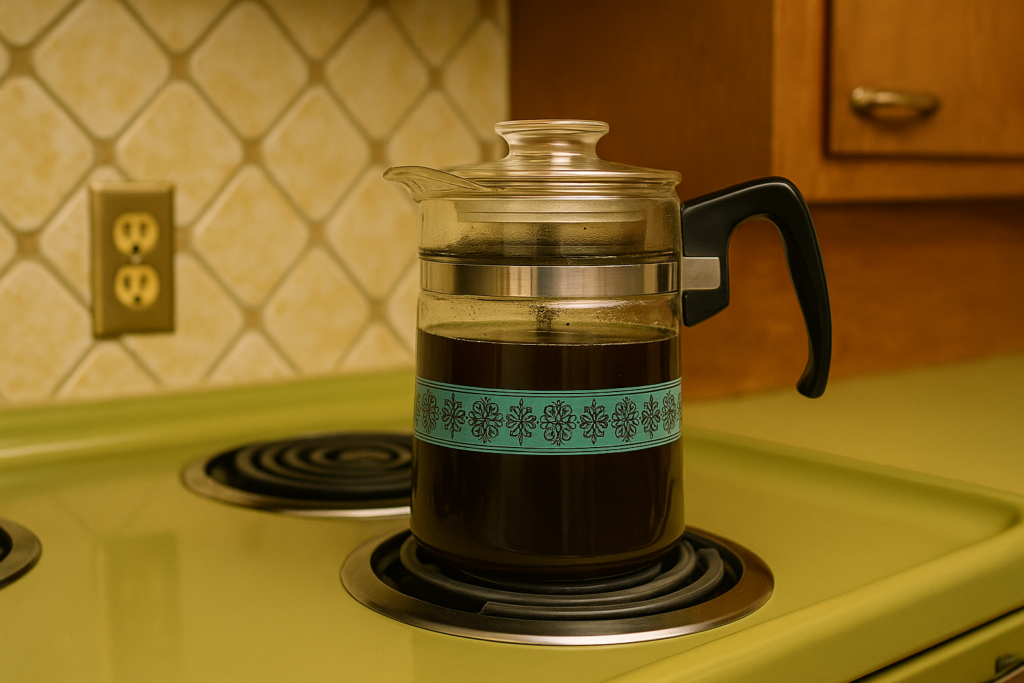
Long before coffee pods and baristas were part of the morning routine, the percolator ruled the stovetop. This chrome or aluminum vessel brewed a robust, bubbling cup of coffee, filling the kitchen with rich aroma and rhythmic gurgling sounds. The clear glass knob at the top let you watch the magic unfold, and everyone had their own secret timing for the perfect brew.
Though they’ve primarily been replaced by drip machines and espresso makers, percolators still capture the heart of coffee lovers who crave nostalgia or stronger-than-usual coffee. Thrift stores often carry these sturdy relics, some of which are still fully functional and others purely decorative. For those who remember it fondly, brewing with a percolator was as much about the process as the result. It wasn’t instant, but it was worth the wait.
5. Toaster Covers
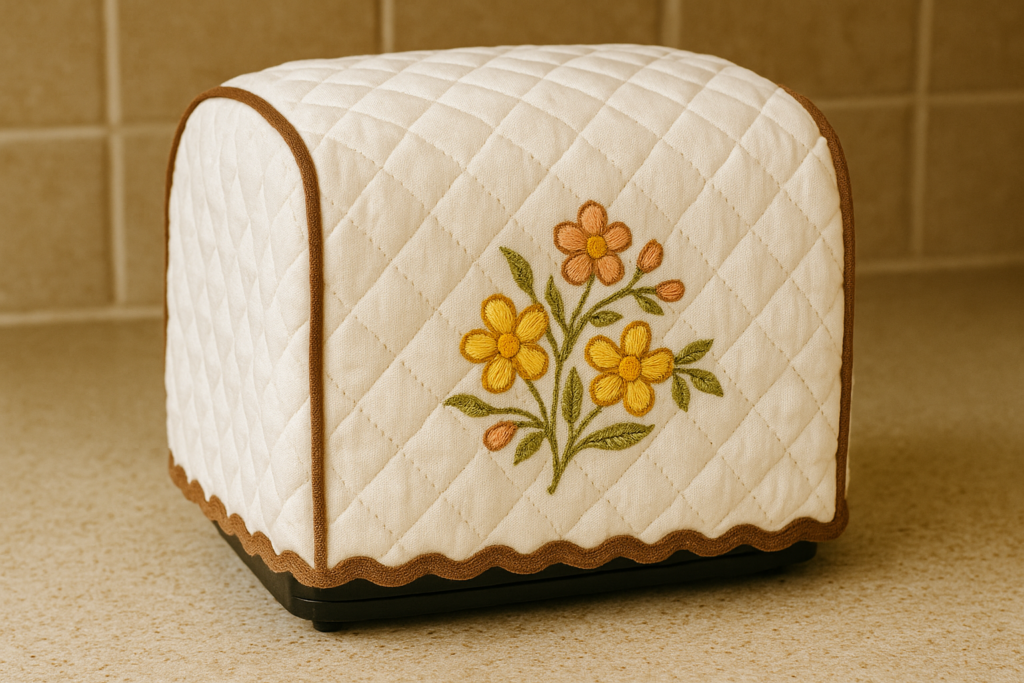
It might seem silly now, but toaster covers were once a staple of kitchen fashion. Often quilted or crocheted by hand, they transformed a simple appliance into a cozy piece of decor. Sometimes adorned with ruffles, lace, or kitschy prints, these covers reflected the personality of the homemaker and the era’s passion for presentation, even when it came to small appliances.
Today, we leave our toasters bare and functional, but these decorative slips live on in thrift shops, echoing a time when homemaking was a form of artistry. The covers were less about dust and more about dignity, turning an everyday object into something charming. Spot one in a floral pattern or gingham and you’re instantly back in your aunt’s or grandmother’s kitchen, where even the toaster had its own outfit.
6. Recipe Boxes
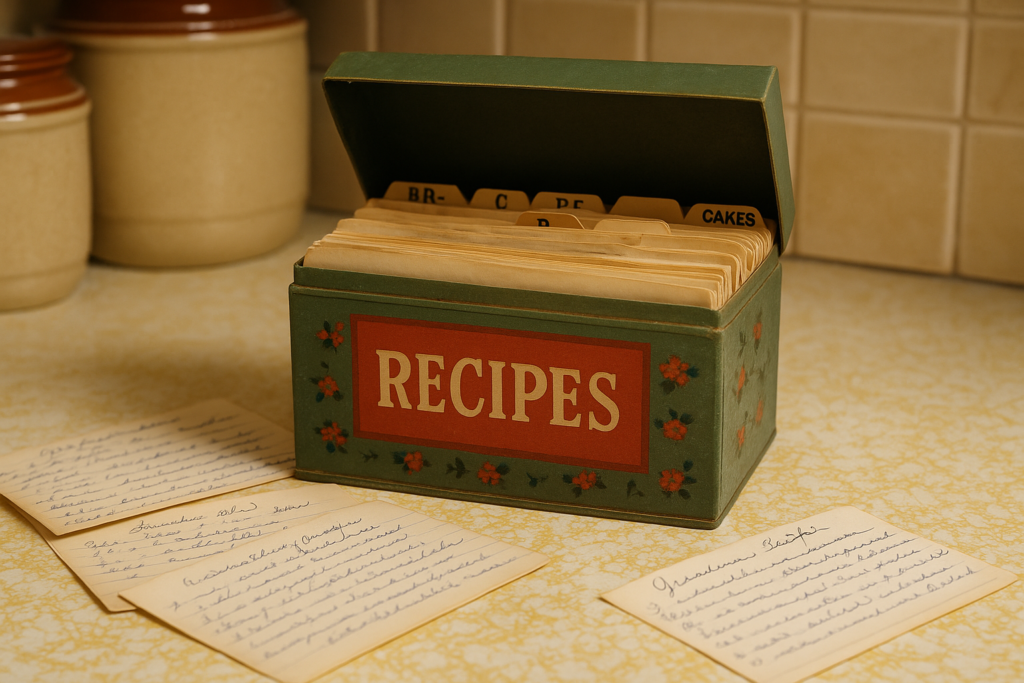
Before there were recipe apps and digital cookbooks, there was the humble tin box crammed with handwritten index cards. Each card bore the fingerprints, grease stains, and personal tweaks of home cooks who perfected every meal. Some boxes held generations of kitchen wisdom, passed down from mother to daughter with pride and love.
The recipe tin was more than storage, it was a personal archive. Opening it often meant flipping past family favorites, long-forgotten disasters, and church potluck hits. These boxes, now found dusty and dented in thrift stores, hold culinary history far more personal than anything on the internet. They’re a reminder that some of the best meals came with no measurements, just memory and heart.
7. Salt Cellars
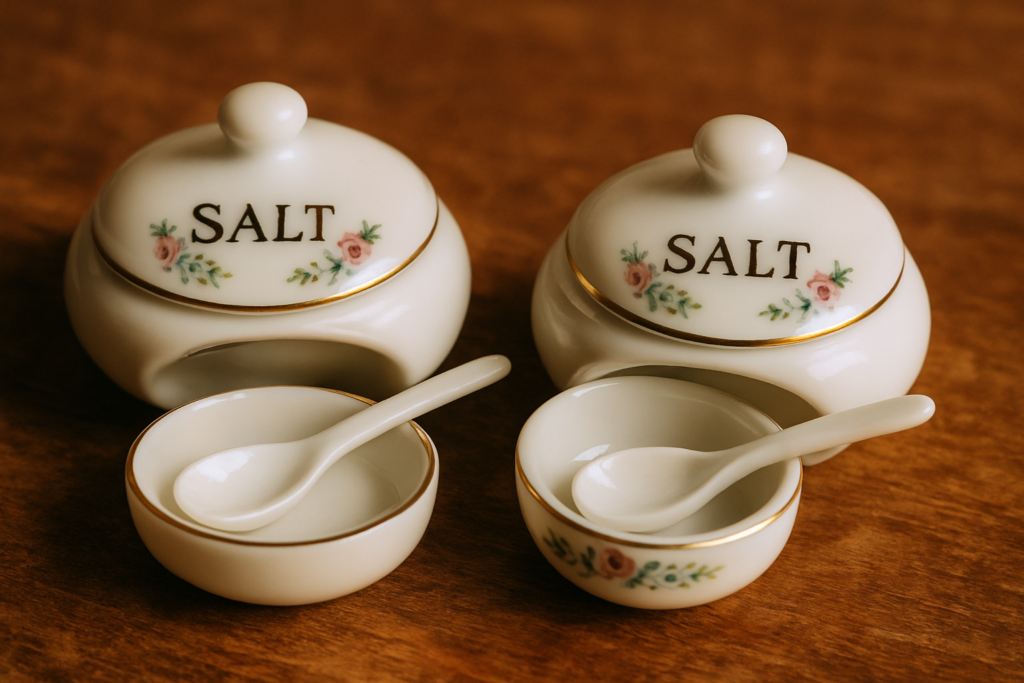
Tiny but elegant, salt cellars were once a dining table staple in homes that valued presentation as much as flavor. Often crafted from cut glass, silver, porcelain, or even Depression glass, they came with miniature spoons or simply invited a delicate pinch. These vessels added formality and charm to everyday meals, turning a simple act of seasoning into a refined ritual. Whether sitting solo or as part of a matched set with pepper companions, they brought a touch of civility to the dinner table.
As salt shakers and grinders took over, salt cellars quietly disappeared from modern kitchens. But they’ve found new life in the world of collectors and vintage decorators, often displayed in china cabinets or repurposed for jewelry or spice storage. Their dainty beauty and old-world aura make them irresistible to those who cherish tradition and detail. Stumbling upon one in a thrift shop feels like discovering a forgotten piece of dinner party history.
8. Aluminum Ice Cube Trays
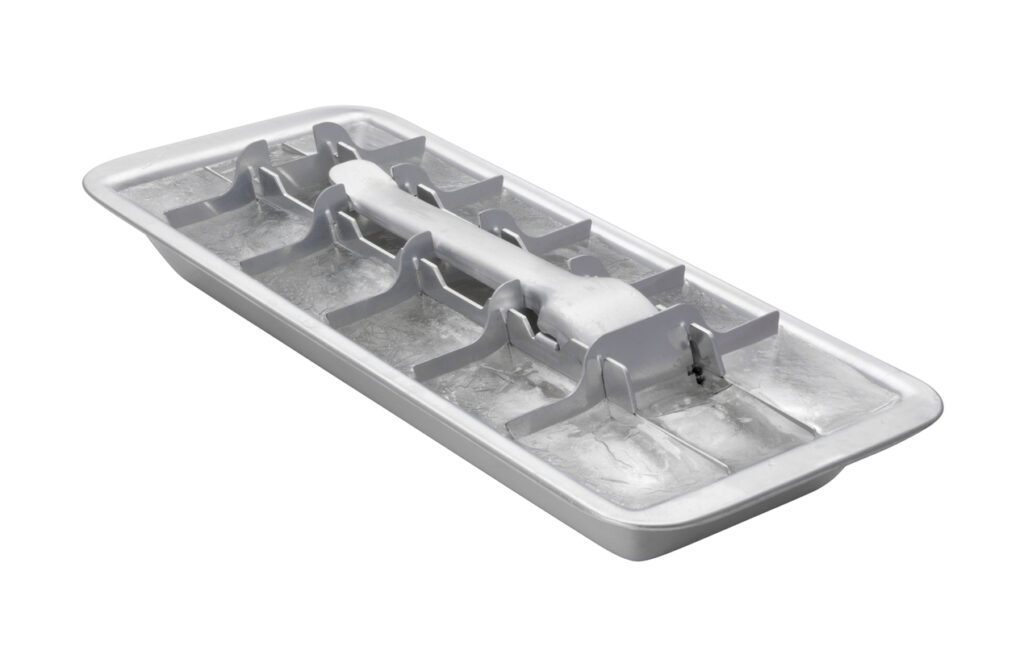
With a satisfying clang and a notoriously stubborn lever, aluminum ice cube trays turned freezing water into a manual task. Introduced before built-in icemakers and plastic trays, these metal contraptions chilled quickly and held up for decades. But their handle mechanism was designed to crack all the cubes free in one go, often stuck or required serious muscle. Still, their cold, industrial charm made them a fixture in mid-century kitchens.
Today, they’re mostly admired for their retro appeal. You might spot one in a thrift store or vintage shop, its aluminum surface dulled with age but still functional. Some people still swear by them for the perfect cube shape or nostalgia-filled cocktails. Others just enjoy the aesthetic throwback to a time when kitchen gadgets had heft, clatter, and character. They weren’t easy, but they were unforgettable.
9. Wooden Bread Boxes
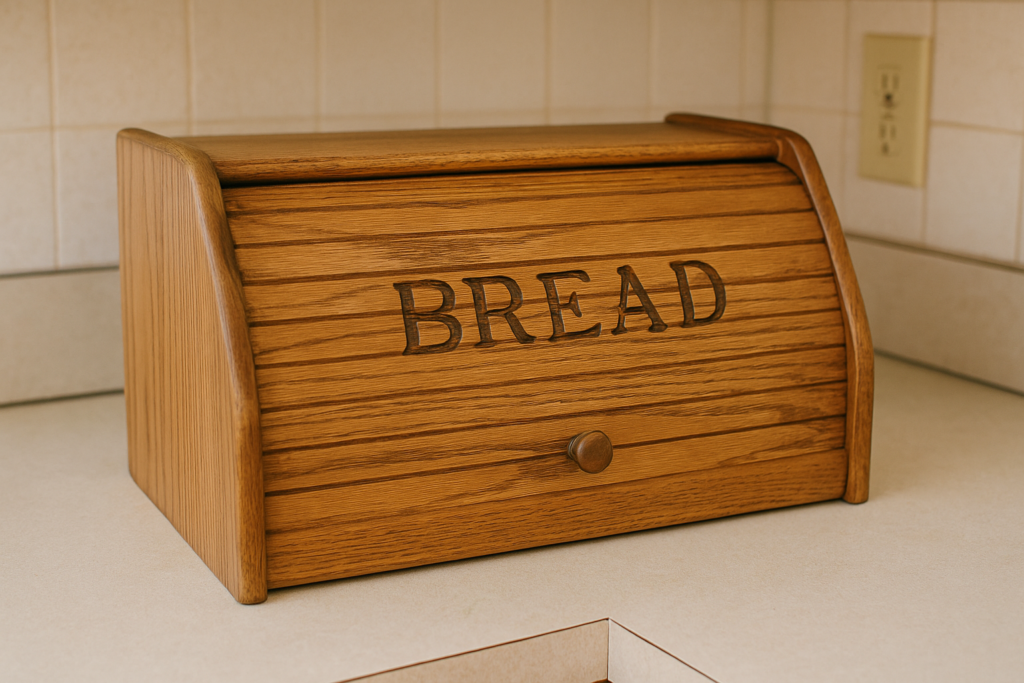
The wooden bread box once served as a kitchen’s quiet workhorse, keeping baked goods fresh while hiding them from view. Most had a rolling tambour door or a drop-down front, sometimes carved or stenciled with the word “BREAD” in block letters. Whether homemade or store-bought, loaves lived here like royalty, protected from sunlight, pests, and prying fingers.
In the age of plastic packaging and pantries, these countertop companions have mostly vanished. But their warm, rustic look has made them popular once again as vintage decor or storage solutions. A bread box in a thrift store might have scratches and flour residue, but it also carries the scent of daily routines of toast at breakfast, sandwiches at lunch, and fresh-baked comfort that never really goes out of style.
10. Jadeite Mixing Bowls
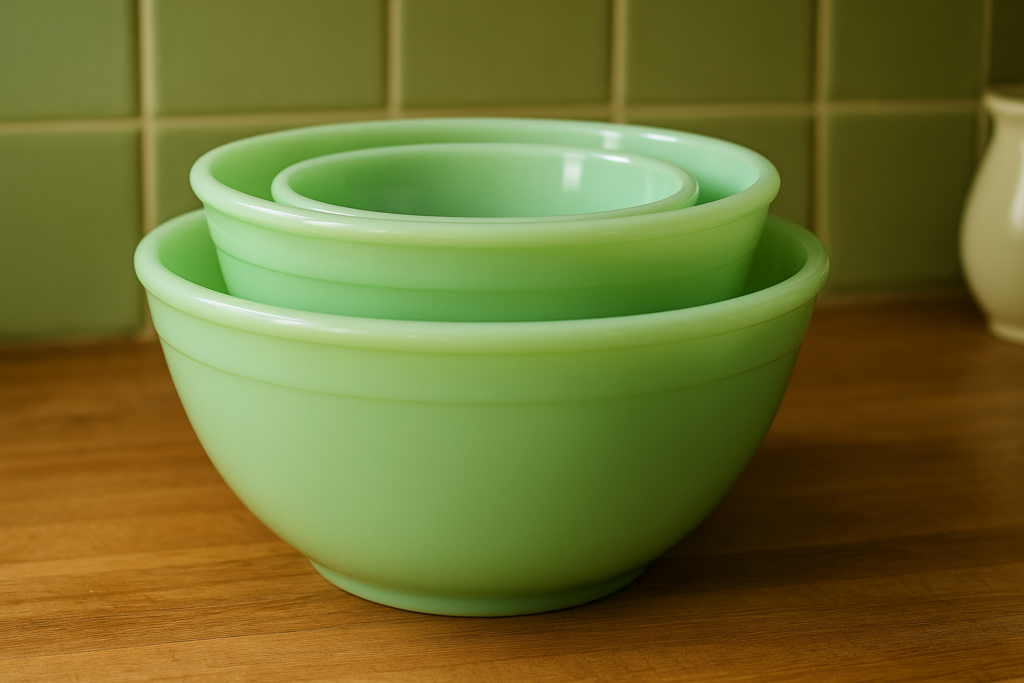
Jadeite mixing bowls, with their soft green hue and milky shine, were a fixture in American kitchens from the 1930s through the 1960s. Made from durable, uranium-free glass by brands like Fire-King and McKee, these bowls were beloved for their sturdiness and pastel charm. Whether mixing banana bread or beating eggs, they were the go-to bowls that did it all and looked good doing it.
Today, jadeite has gone from common to collectible, with even single pieces fetching high prices at antique shops. If you find one in a thrift store, you’ve struck gold. Their nostalgic color and practical weight make them both eye candy and workhorses. For many, they’re a symbol of home cooking done with care and style, and they bring a timeless cheer to any modern countertop.
11. Canning Jars with Glass Lids
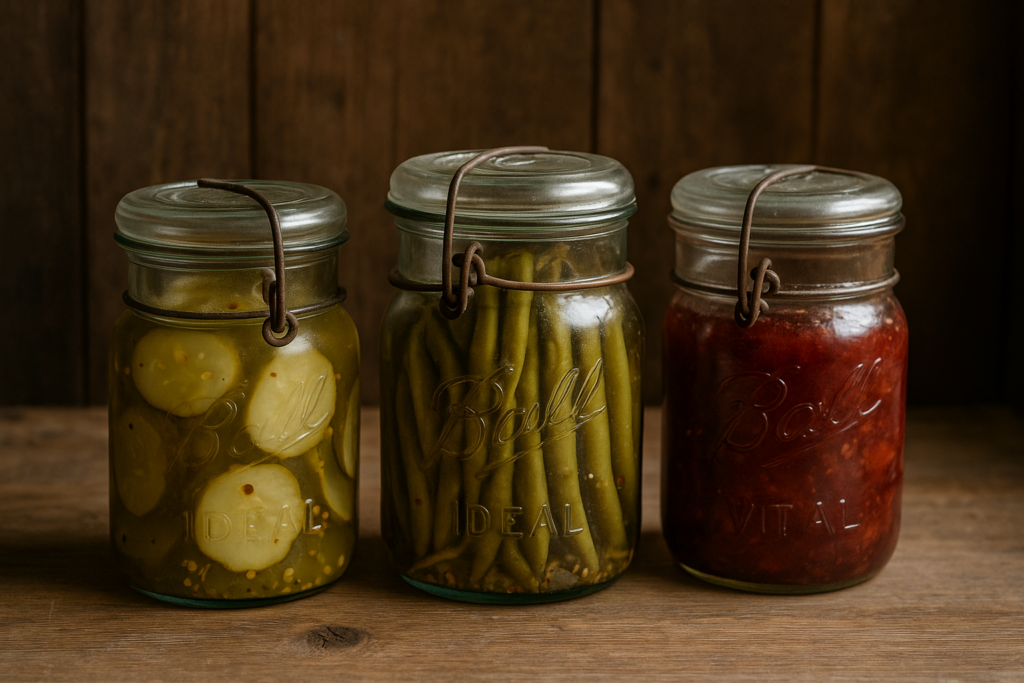
Long before the rise of trendy Mason jars, canning was done with heavy glass jars sealed with clamp-down glass lids and rubber rings. These jars filled pantry shelves with preserved peaches, pickled beets, and homemade jams. The sound of popping seals in a quiet kitchen meant success, as food was safely stored for the winter months or Sunday dinners.
Today’s versions are sleeker and easier to use, but the originals still appear in thrift stores and flea markets, often etched with old logos or clouded from years of use. They’re prized by vintage collectors and DIY decorators alike, used now for everything from flower vases to storing dry goods. Holding one in your hands is like touching a piece of culinary heritage, back when self-sufficiency was a way of life.
12. Hand-Crank Egg Beaters
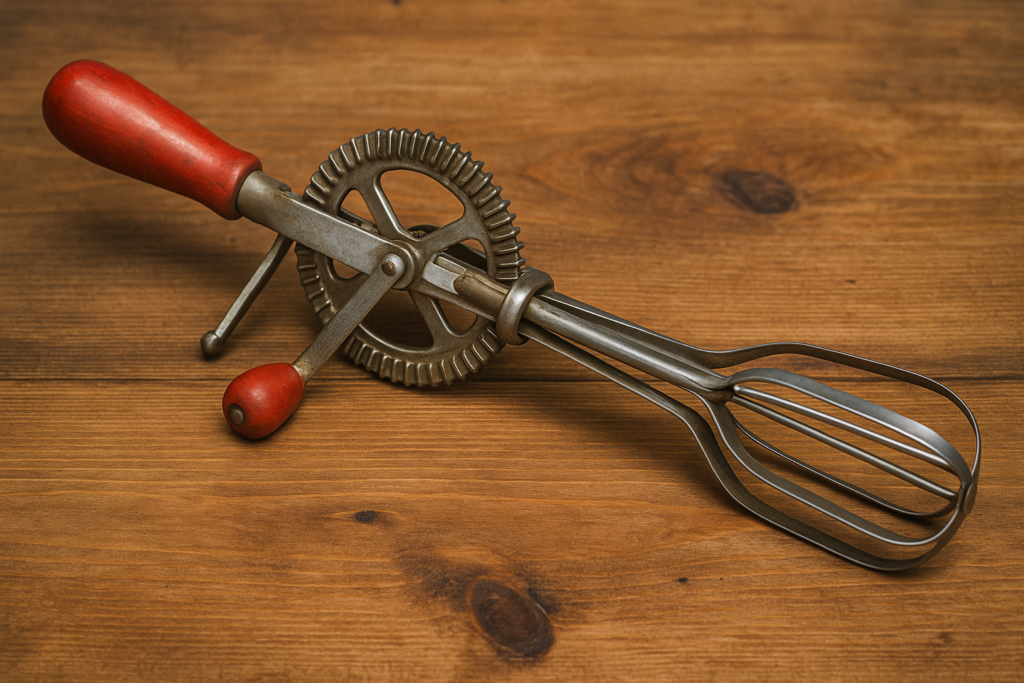
The hand-crank egg beater was a marvel of mechanical simplicity. Featuring interlocking gears and twin beaters, it whipped eggs, batter, and cream with nothing more than human energy. Red-painted handles and polished steel gave it an industrial beauty, and it often hung on a hook, ready for action. Using it took rhythm, coordination, and a little muscle, earning its place in kitchen lore.
Though stand mixers have long replaced it, the hand-crank beater still stirs up memories of baking with grandma or prepping Sunday brunch. Vintage models still work beautifully and are often spotted in thrift stores, their handles worn smooth by decades of use. They remind us that cooking used to be more hands-on, and that effort, not speed, was once the gold standard in the kitchen.
13. Tabletop Spice Carousels
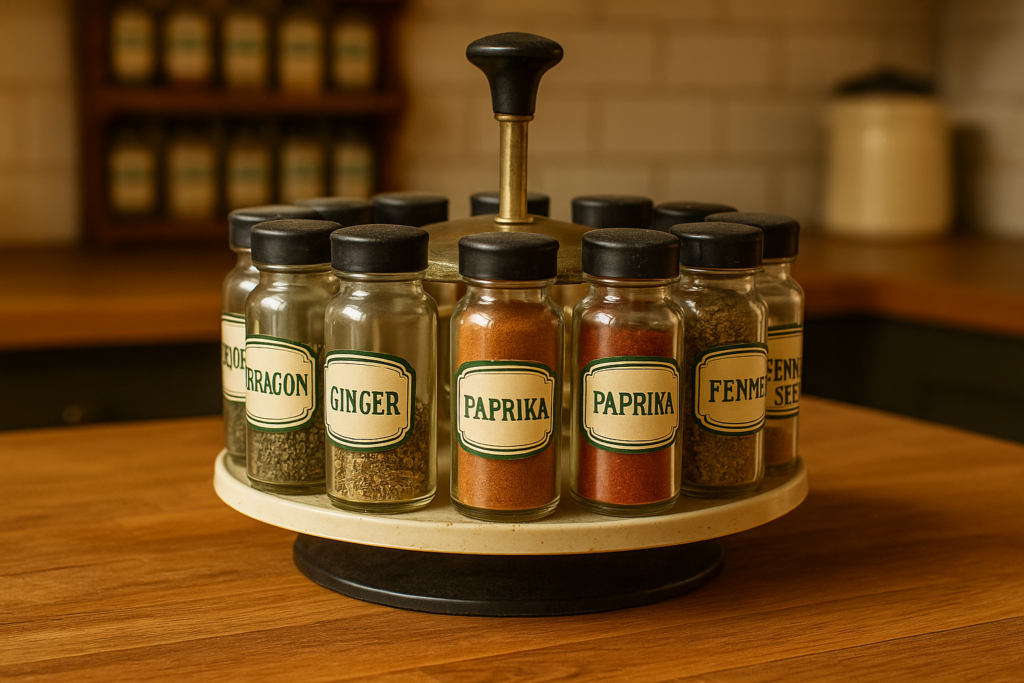
Before spice racks were sleek and magnetic, the tabletop spice carousel ruled the kitchen. Shaped like a lazy Susan and holding up to 16 jars, it rotated like a game show wheel, offering up paprika, nutmeg, or the ever-mysterious “mace.” Often a wedding gift or housewarming essential, it sat on the counter like a centerpiece, even if half the jars remained untouched for years.
In thrift stores today, you’ll often find them dusty and incomplete, but still rotating with charm. The handwritten or faded labels tell stories of meals long forgotten and a time when a variety of spices felt sophisticated. For vintage kitchen enthusiasts, the carousel evokes the thrill of discovery and perhaps a reminder that cooking used to be a little more adventurous, even if no one knew what marjoram was.
14. Junk Drawer Organizer Trays
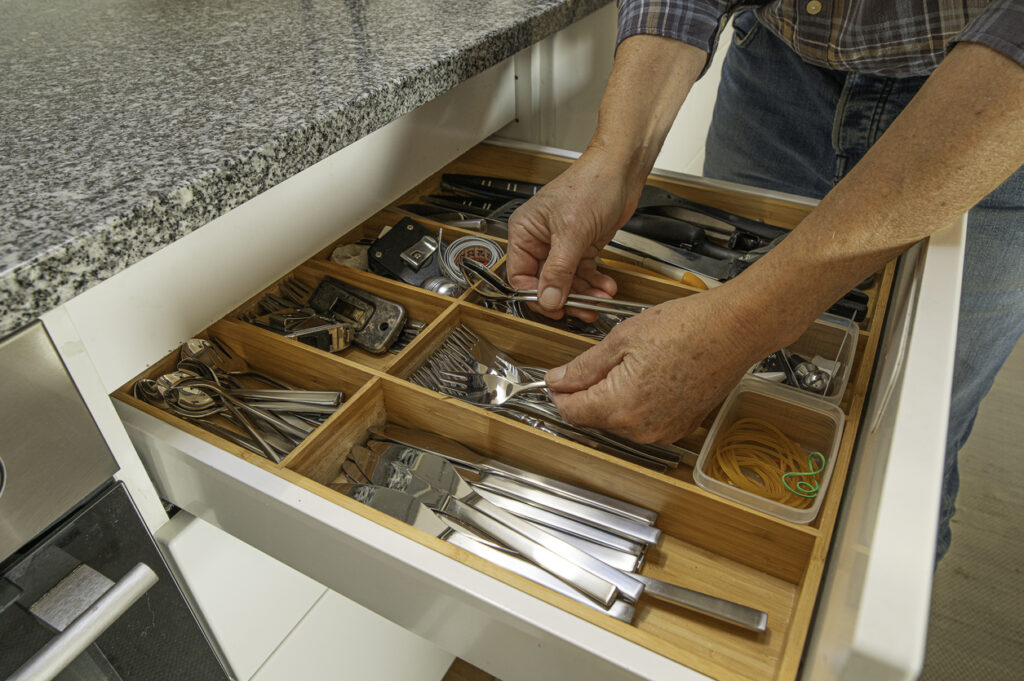
No one planned for the junk drawer to become a household institution, but once it did, the plastic organizer tray was its unsung hero. With perfectly sized compartments for rubber bands, corn-on-the-cob holders, dried-up pens, and bread bag clips, it brought a sense of structure to the chaos. This was where lost buttons, mystery keys, and a rogue AAA battery always turned up when you needed them least, or most.
Today, these trays still lurk in kitchens everywhere, but the vintage versions—with their yellowed plastic and oddly specific slots- are a thrift store staple. They tell the story of a time before digital reminders and innovative storage solutions, when homes ran on little things tucked away in shallow drawers. For some, reorganizing one is a simple task. For others, it’s an archeological dig through everyday history.
15. Oil & Vinegar Cruet Sets
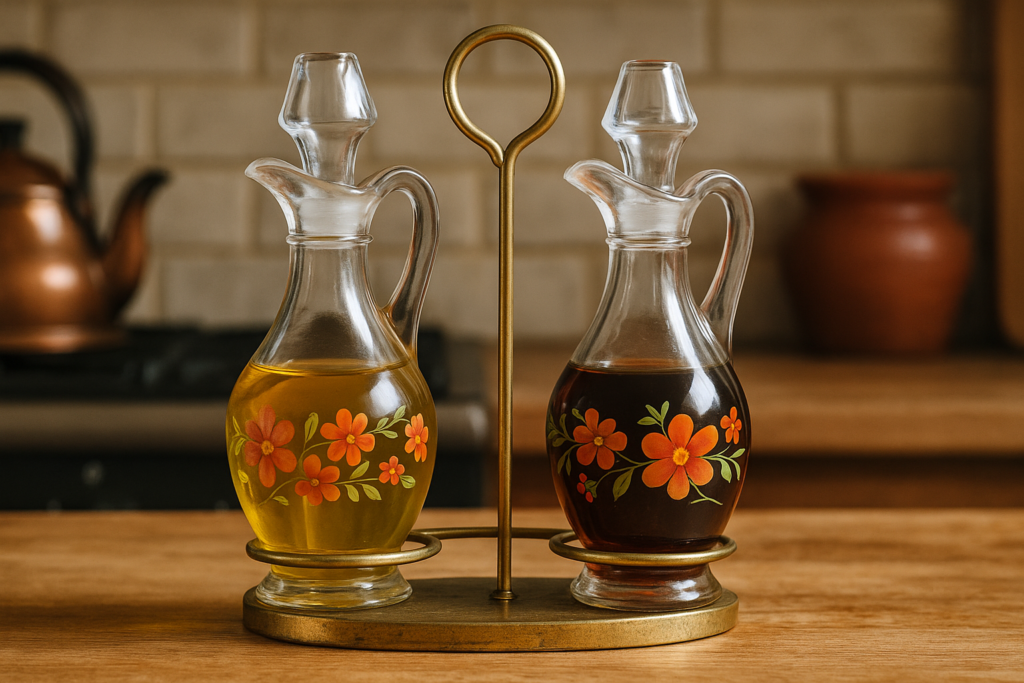
Delicate glass cruets with floral decals or gold trim once sat on dining tables like miniature sculptures. These matched sets, often gifted for weddings or special occasions, made even the simplest salad feel elegant. With long necks and dainty stoppers, they weren’t just containers; they were status symbols, a finishing touch to a well-set table.
Today, oil and vinegar are more likely to live in branded bottles straight from the grocery store. But those who stumble across a cruet set in a secondhand shop often feel a wave of nostalgia. Even if they were rarely used, they stood for the kind of hospitality where details mattered. Owning one now isn’t just about function, it’s about honoring the art of the home-cooked meal.
16. Tin Flour and Sugar Canisters
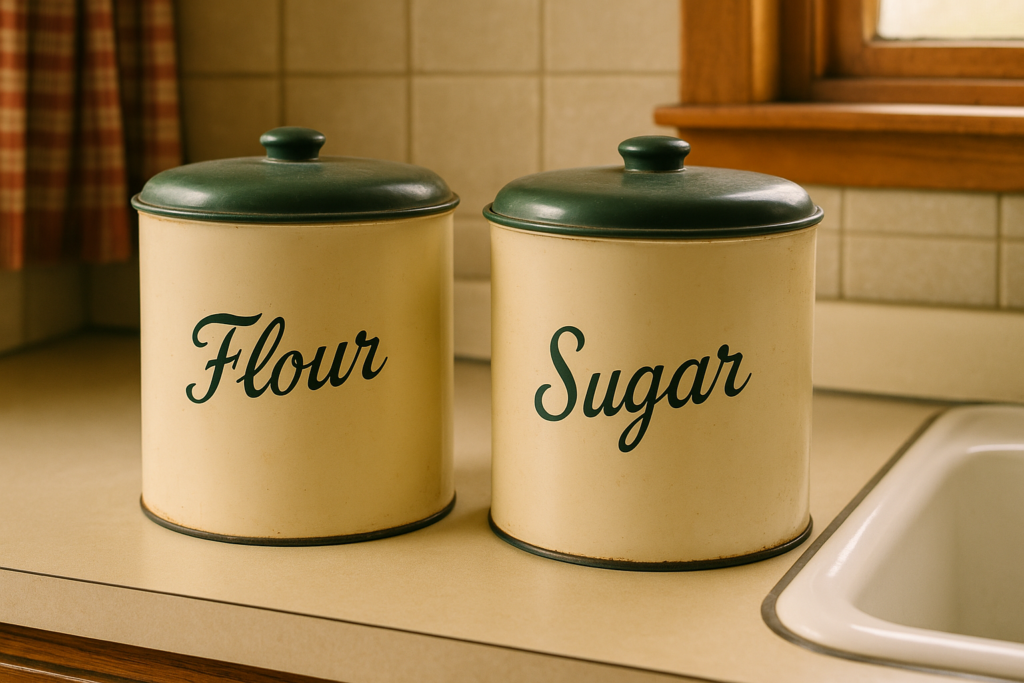
These matching countertop canisters were more than just storage; they were a declaration of kitchen pride. Often labeled in flowing script with words like “Flour,” “Sugar,” “Coffee,” or “Tea,” they came in pastel colors, chrome finishes, or classic kitschy prints. Their lids sealed tight with a satisfying clunk, keeping dry goods fresh and within easy reach.
Modern kitchens might favor clear containers or sleek minimalist designs, but these tin sets still bring warmth and character. Thrift store shelves often hide a lonely piece or an entire mismatched set, each with a story to tell. Even with a dent or two, they remain practical and charming, a reminder that kitchens used to be places of both order and personality.
17. Wall-Mounted Bottle Openers
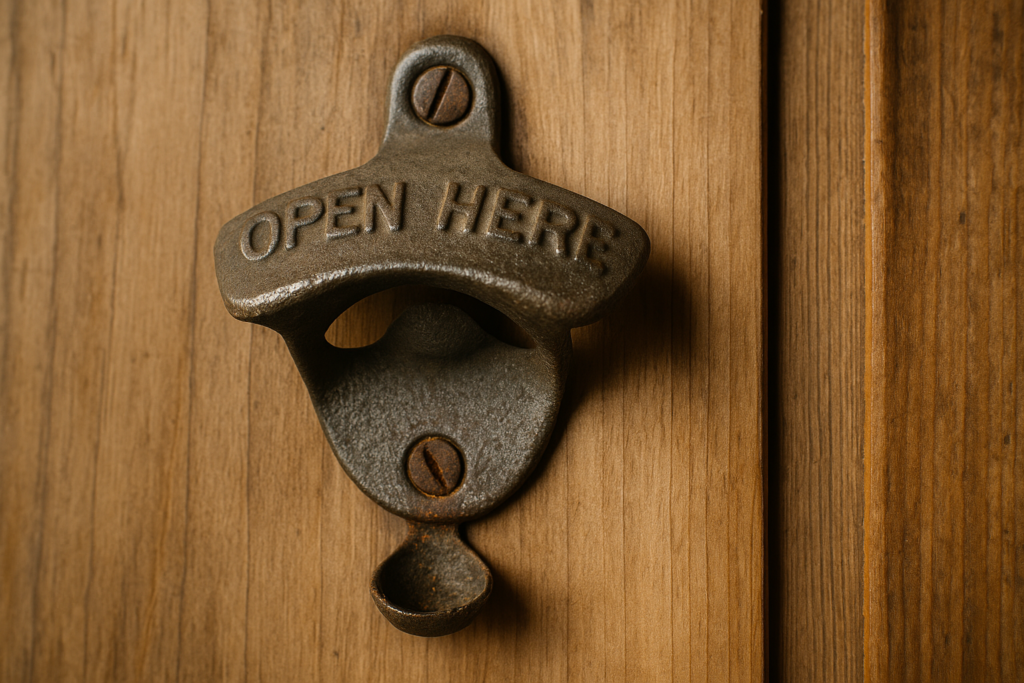
Screwed right into the wooden kitchen frame or back porch post, the wall-mounted bottle opener was always ready for action. Usually made of cast iron or steel, it had a timeless design: one lip to catch the cap, one satisfying yank to remove it. Some even came with a cap-catcher nailed below, so you didn’t have to chase bottle caps across the floor.
While modern bottle openers get tucked into drawers or keychains, the mounted version remains a nostalgic icon, especially in cabins, vintage kitchens, and backyard bars. In thrift shops, they turn up rusty but reliable, sometimes still attached to a square of wood. They were built to last and remind us of a time when soda pop or a cold beer was just one pop away, no searching required.
18. Melamine Dinnerware
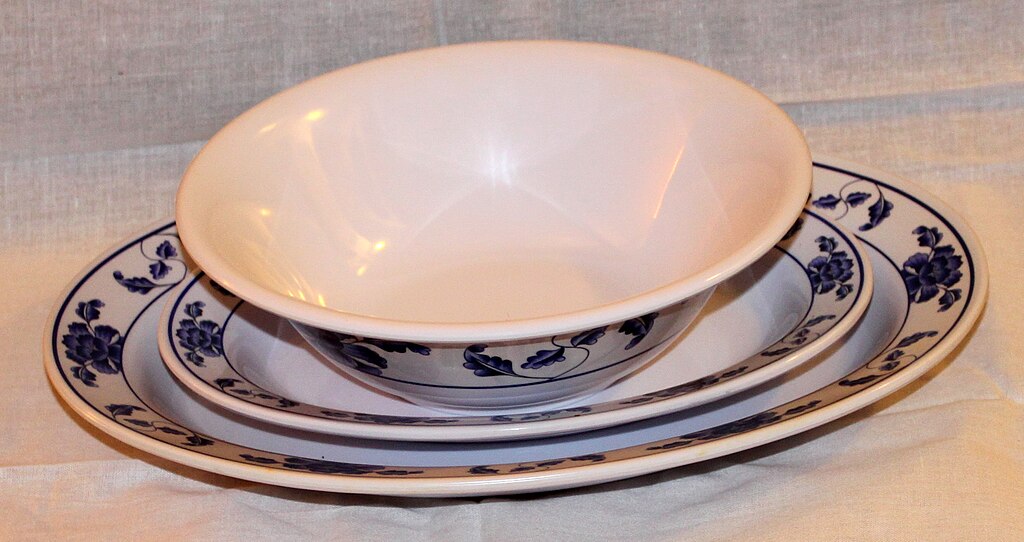
Melamine plates and bowls were a marvel of mid-century practicality, lightweight, unbreakable, and bursting with bold colors and atomic-era patterns. They were perfect for everyday use or summer picnics, and they stacked like a dream on cupboard shelves. Kids couldn’t break them, and moms loved how easy they were to clean. Some sets even came with matching tumblers or snack trays.
Today, melamine is making a comeback, but nothing beats the originals with their funky designs and retro hues. You’ll often find stacks of them in thrift stores, still bright and chip-free decades later. Whether you use them or display them, they’re a throwback to a time when dinnerware was both fun and functional. And let’s face it, food just looks better on a vintage turquoise plate.
19. Clothespin Bags
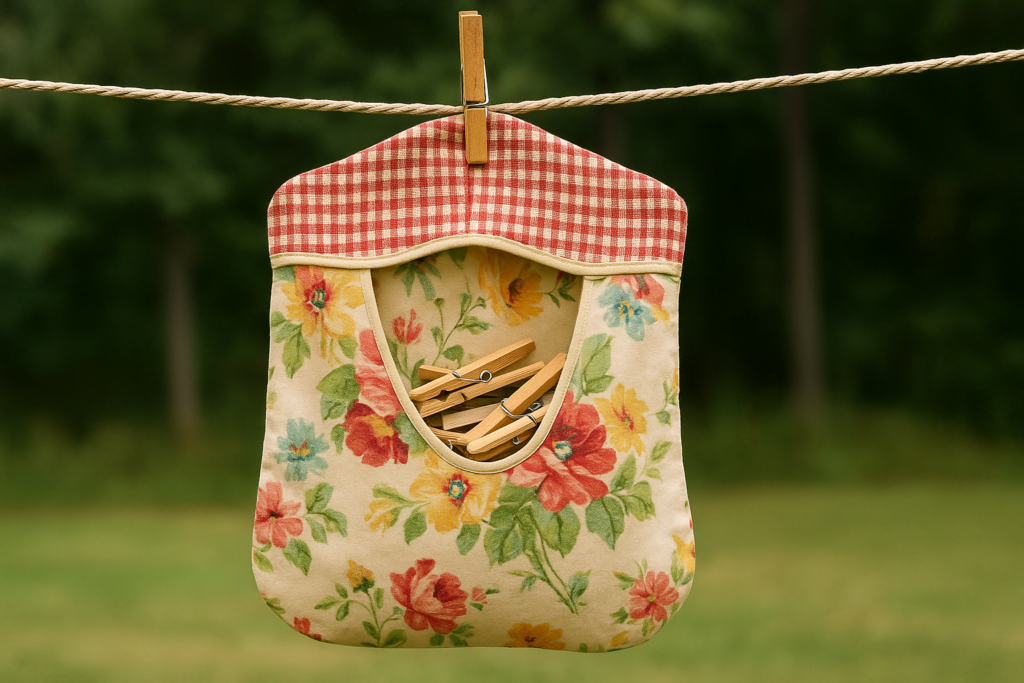
Hanging by the back door or in the laundry nook, the clothespin bag was often sewn from a retired apron or cheerful scrap fabric. It held dozens of wooden pins, ready to clip laundry to a clothesline stretched across the yard. This was before electric dryers were standard, when laundry danced in the wind and sunshine did the drying.
Most clothespin bags had a loop for hanging and a wide mouth for easy access, though each one was uniquely homemade. Today, they’re a rare sight, but when found in thrift stores, they radiate homey charm. Whether you repurpose one for décor or actual use, it’s a lovely nod to a quieter, more self-reliant era, where fresh air was part of the fabric softening process.
20. Corn-on-the-Cob Dishes
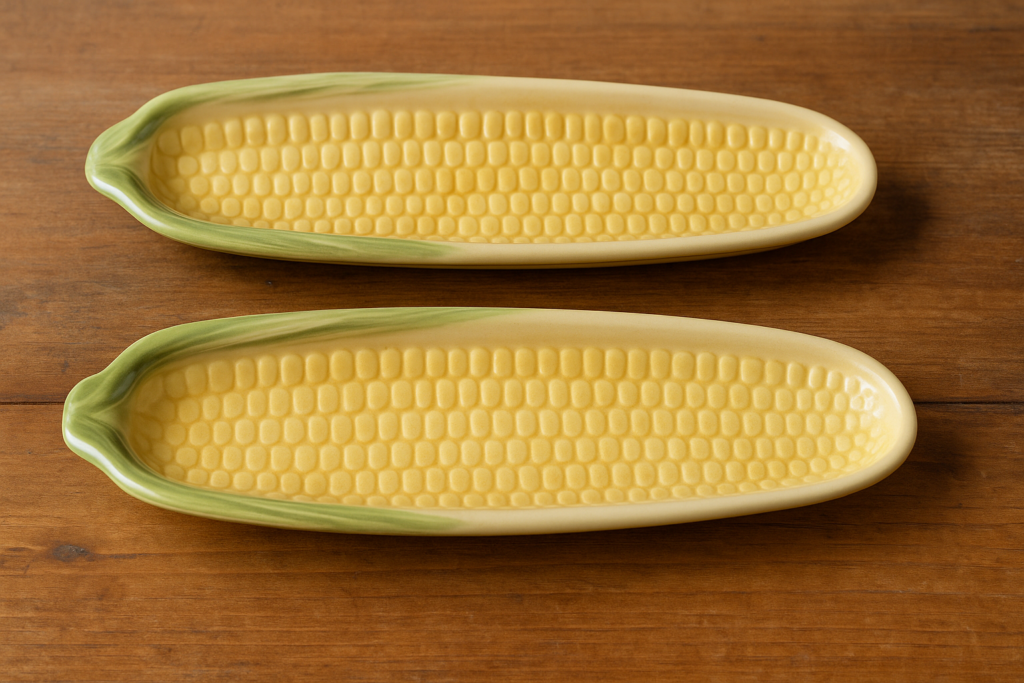
These long, shallow trays were specially made for one glorious purpose: holding hot, butter-slathered ears of corn. Often shaped like corn themselves or decorated with yellow kernels and green husks, they kept the cobs steady and the mess contained. Some even had built-in grooves to catch the drips or rest for those tiny corn holders that never stayed in place.
You don’t see these in modern kitchens much anymore, but they pop up in thrift stores looking cheerful and summery. Using them today adds a little flair to a backyard barbecue or family dinner. They speak to a time when table settings were thoughtful, seasonal, and sometimes a little bit silly. And honestly, nothing beats a dish made just for enjoying fresh summer corn.
21. Glass Juicer Reamers
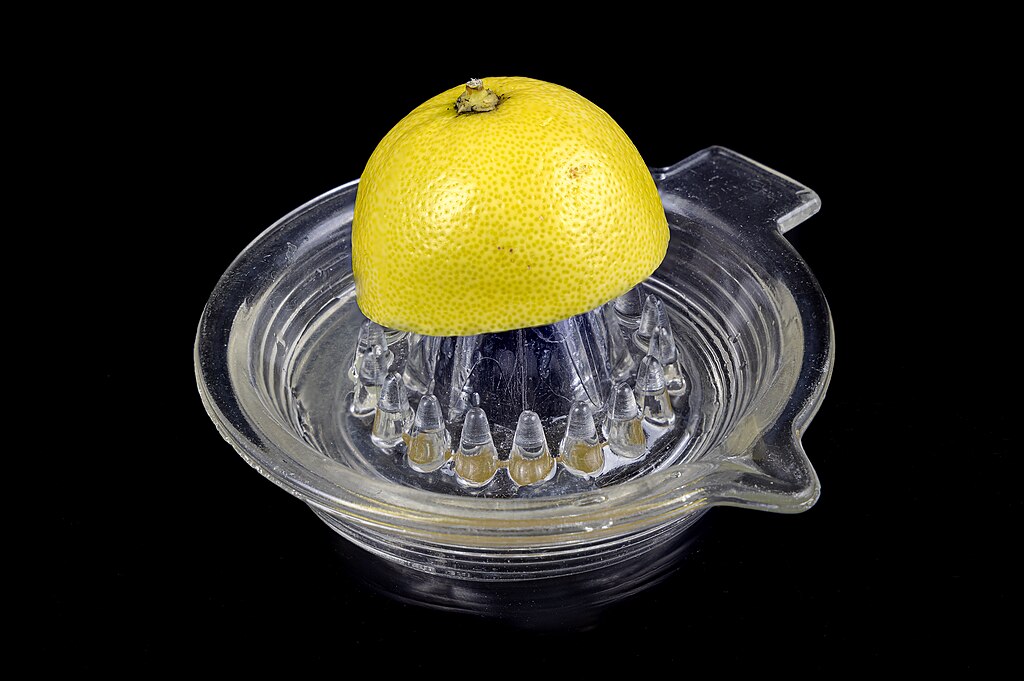
This sturdy, ridged dome of pressed glass was the go-to tool for squeezing fresh citrus. You’d place it over a measuring cup or ceramic base, press down, and twist until every drop of lemon or orange juice had been wrung from the fruit. The built-in spout made pouring easy, and the weight kept it from sliding across the counter.
Before electric juicers and store-bought juice, this simple tool did the job beautifully. Even now, many home cooks swear by it for its control and old-school charm. Thrift stores often carry them in frosted, clear, or tinted glass, sometimes with tiny chips that speak to years of use. It’s the kind of item that’s both practical and pretty enough to leave out on display.
22. Tin Ice Cream Scoops with Trigger
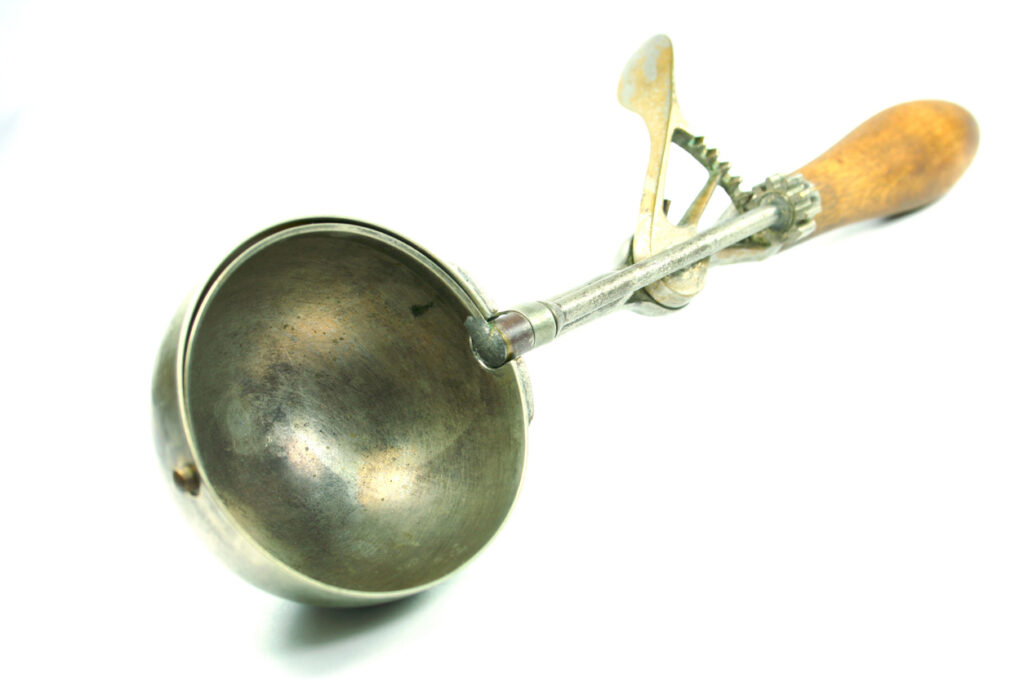
With a click of the thumb lever, this tin scoop carved perfect rounds of ice cream straight from a rock-hard tub. The mechanical action was satisfying and simple, and it worked just as well for cookie dough or mashed potatoes. These scoops were built to last, with heavy-duty handles and a weight that felt solid in your grip.
Though modern scoops have silicone grips and sleek designs, the old-school trigger scoops still have their place. Many thrift store versions bear the marks of years spent scooping neapolitan on summer nights or serving birthday sundaes. They may not be flashy, but they deliver memories along with every ball of rocky road or butter pecan.
23. Avocado Green or Harvest Gold Anything
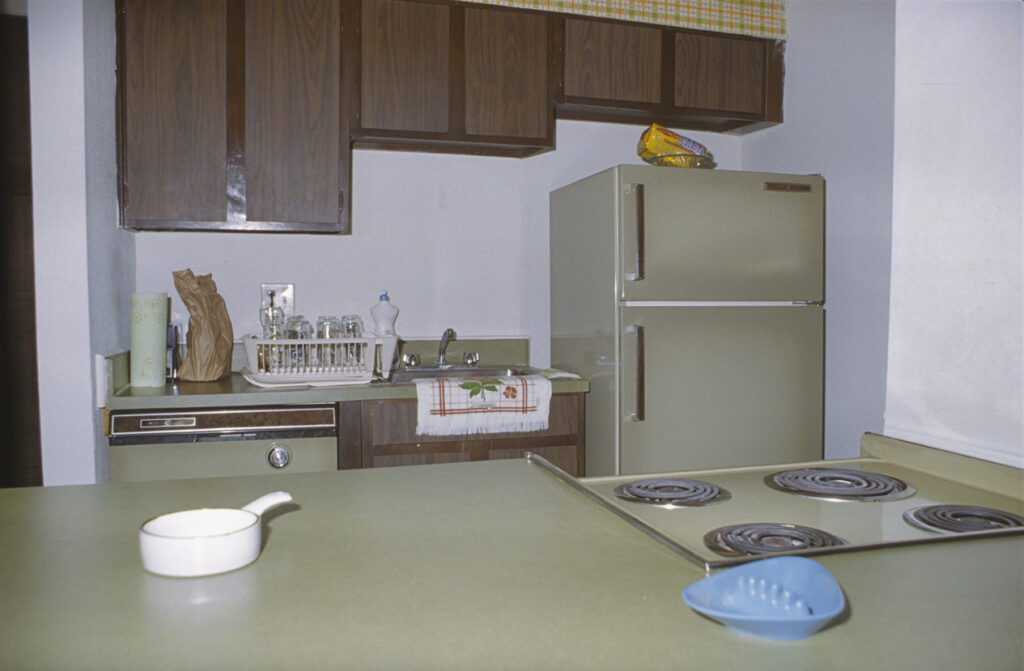
You couldn’t step into a 1970s kitchen without seeing something in avocado green or harvest gold. From blenders and toasters to wall clocks and refrigerators, these earthy hues defined the era’s kitchen aesthetic. Paired with dark wood cabinets and orange accents, they made the kitchen feel warm, groovy, and just a little dramatic.
Though the trend faded fast in the eighties, these colors are having a retro resurgence. Thrift stores are full of vintage appliances and décor in these iconic shades. Whether you love them or cringe at the sight, they capture a specific moment in design history. And if you bring one home today, it’s a bold statement that says you appreciate the funky beauty of kitchens past.
The Charm We Left on the Counter
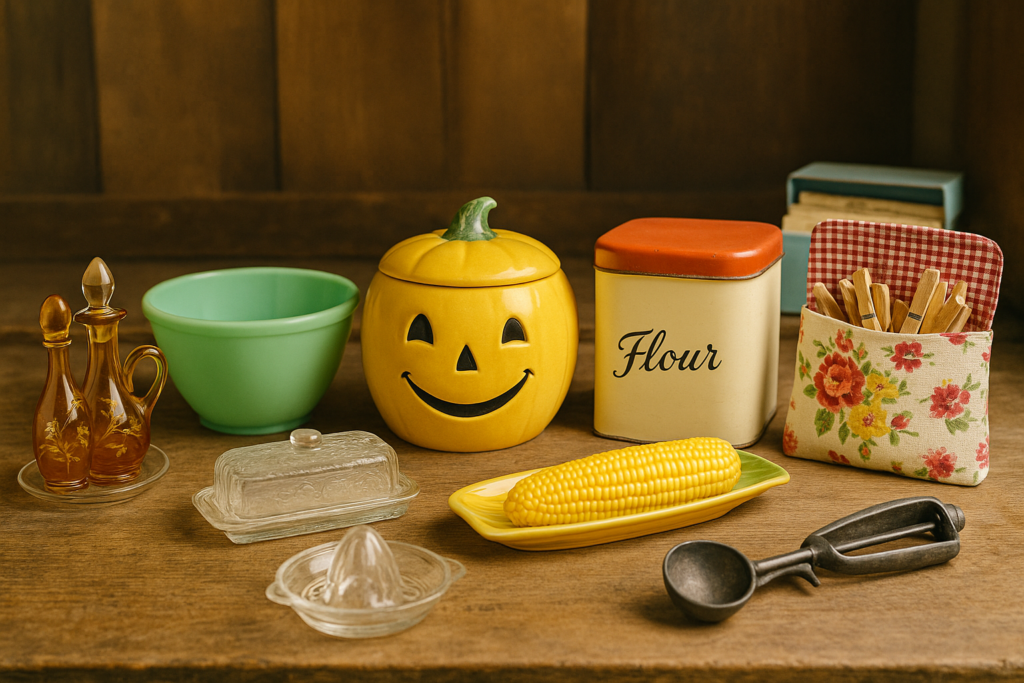
These vintage kitchen staples weren’t just functional; they were part of a rhythm that made home feel homey. From clunky ice trays to cheerful cookie jars, each piece brought personality and warmth to everyday life. They remind us that kitchens were once filled with quirks, not just convenience.
So, the next time you’re wandering through a thrift store, don’t overlook that jadeite bowl or floral cruet set. Pick it up, take it home, and bring a little heart and history back to your countertop.
This story, From Cookie Jars to Jell-O Molds: 23 Kitchen Classics You Only Find in Thrift Stores Now was first published on dailyfetch.net.


